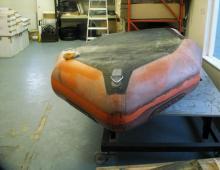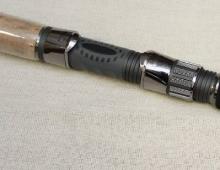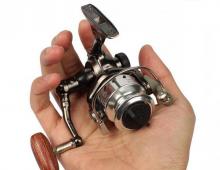Using a boat for carp fishing
Miles Gibson spends many years on large bodies of water, where the use of a boat provides a significant advantage. In his article, he will tell you how to use the boat to your advantage when fishing for trophy carp.
Boats for carp fishing can be divided into two types: inflatable and rigid framed (I will call them “rigid”). Both options have both advantages and disadvantages depending on the situation. Rigid boats stay lower in the water, so they are easier to handle, especially in windy conditions. Inflatables are held much higher, so they are easily blown away by the wind, which often gets in the way.
If you are planning to purchase an inflatable boat, then choose the option with multiple compartments. If one of the compartments is damaged, the boat will still remain afloat. Most modern models meet this requirement, but sometimes not entirely reliable options come across. It is also useful to always have a special puncture patching kit with you.
Inflatable boats are easy to transport as they are foldable. In addition, they produce a minimum of noise on the water. Even if you hit the boat with an oar, it will not scare away all the fish around. These properties make inflatable boats a popular choice among carp anglers.
The presence of a life jacket is mandatory. Even if you are an excellent swimmer, no one is safe from being hit on the head by a boat in the event of an emergency. Never save on your health and, moreover, on life! Modern life jackets are compact and do not interfere at all.
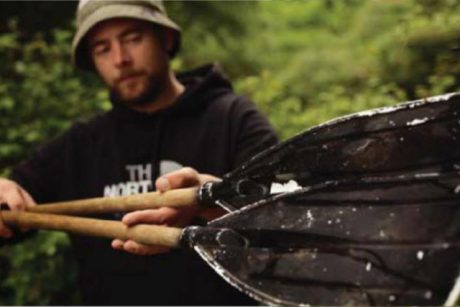
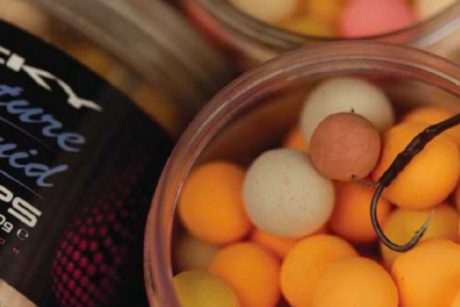
I always have two oars with me, even if I use an electric motor.
I love bright colors.
If you use an electric motor in a boat, regardless of size, it is always a good idea to have a spare fully charged battery with you. It should be noted that the presence of a motor in the boat does not mean that you should give up the oars. I always use only oars when I approach the point of catching. Also, the oars allow you to clearly control the movement of the boat in windy weather.
If you are going to use the boat not only to search for fishing points, baiting and delivering equipment, but also expect to fish from it, then you must first select a suitable mat, short landing net, bag and find a permanent place for them in the boat.
The presence of a comfortable mat in the boat is the most important aspect. First, the bottom of any boat is not suitable for laying down carp. Secondly, the carp will not just lie there, but will start jumping in all directions. With a checkmate, you will keep the health of the fish, your nerves and stay clean.
Many anglers, having gained access to a boat, are often too carried away by its freedom of movement and forget about the actual fishing. Once in a free water area, you can easily lose your sector and the angle of movement towards it. To prevent this from happening, I first of all look for promising areas with a marker from the shore, note their location and distance.
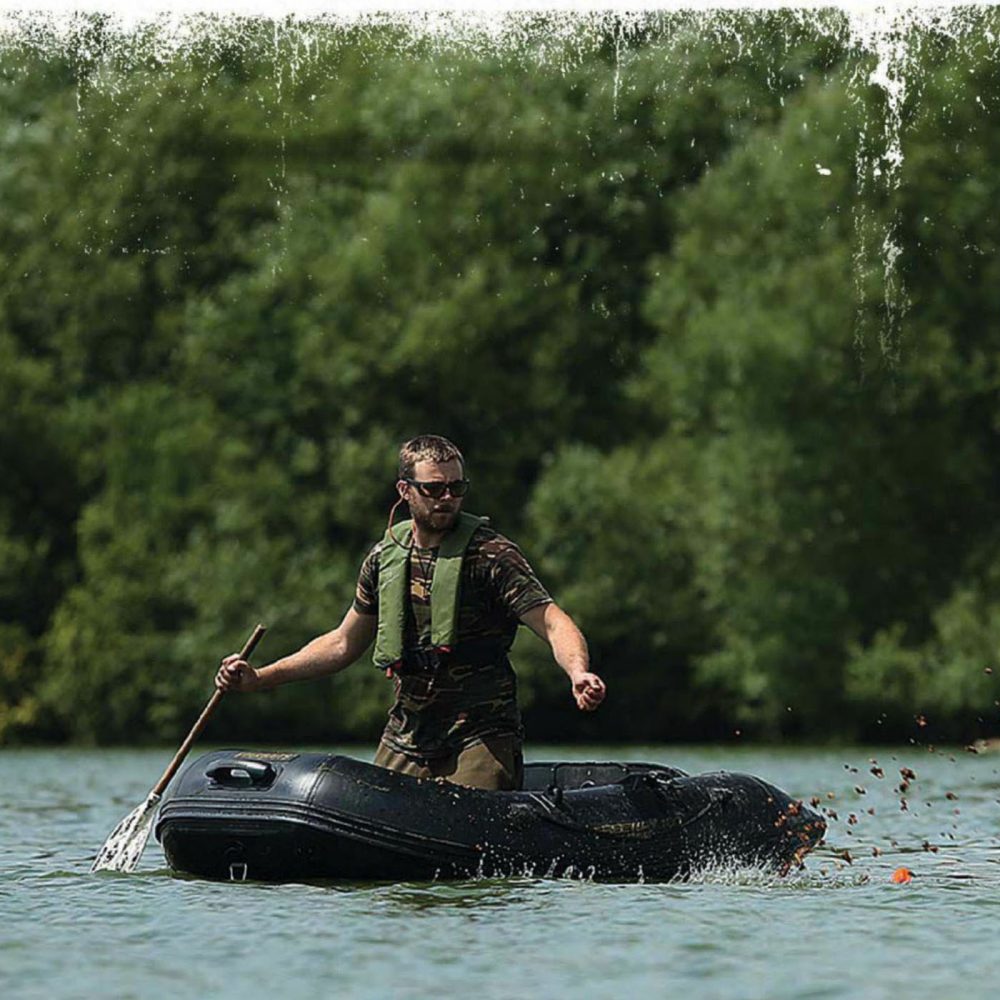
Despite the convenience of baiting from a boat, you should not throw away more than you need.
To the most interesting points, I usually measure the exact distance on the pegs in order to be able to fish in them in the next sessions without additional reconnaissance.
When the reservoir is relatively deserted, I often use H-blocks (buoys), which I mark the distinctive parts of the water area (edges, pits, shallows, etc.). They give a visual representation of what is happening on the reservoir.
If the transparency of the water allows, I always examine the bottom with an aquascope. For those who don't know, this is a simple conical bucket with a glass bottom. Often, it is the aquascope that literally opens your eyes to what is happening under water and allows you to better understand the natural habitat of carp.
If you notice dug holes in the silt layer or cleared paths, then most likely a carp or a whole group fed here. Find the best position for your rigs, always taking into account their location to the rods on the shore and nearby obstacles (driftwood, algae).
As for bait, you need to decide right away so that later there is no temptation. Being able to feed generously from the boat does not mean that you have to dump kilos of boilies. Feed as much as you feel is necessary to get a bite or a successful long session.
Some anglers, having boarded a boat, begin to pour buckets into the fishing point, the sooner they harm themselves. I also try to always feed in such a way that the bait does not touch the line. In this case, my nozzle will be on the edge of the bait spot, and not in its epicenter. I think this helps to get bites faster, besides, the carp will not collide with the lines and, as a result, get scared.
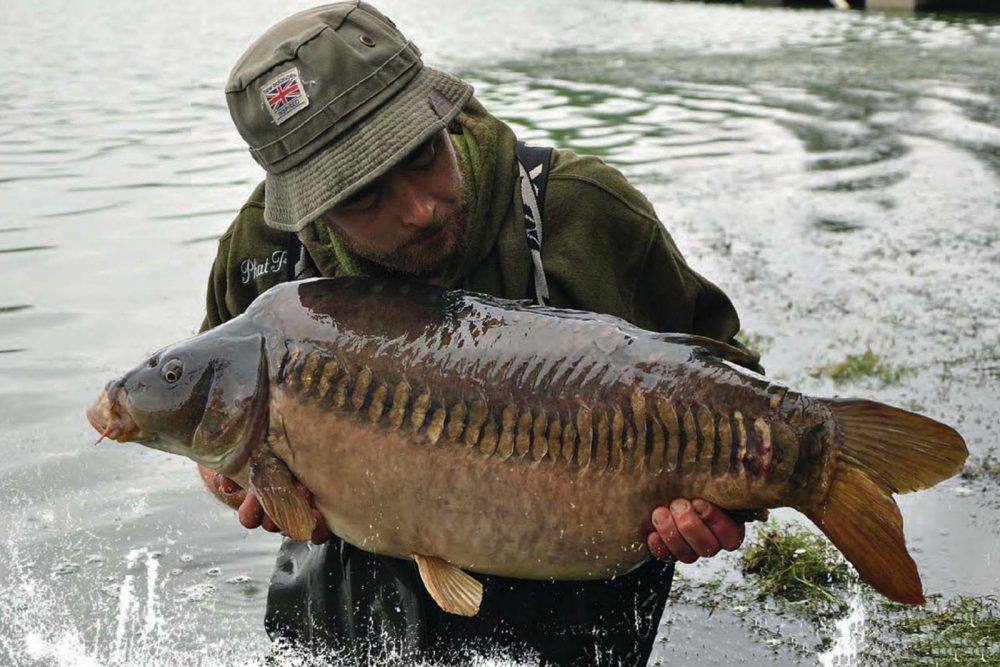
If we talk about the fishing points themselves, then I like the bottom areas with the presence of natural food. Most of my bites most often occur from points where there is algae or good silt.
I'm not a big fan of huge flat-bottomed lots. I believe that carp, if they visit them, then only while patrolling their territory. Yes, bait can teach carp to visit a certain part of the water area, but this takes a lot of time. It is much better to find a point where the carp periodically feeds.
I focus on the choice of fishing point, because I am sure that this is the aspect that the boat gives the angler a key advantage. I think no one doubts that the place of fishing is the cornerstone of success.
Whether you are fishing from the shore only or using a boat, the choice of bait and rigs is a matter of personal preference. I like to feed with a mixture of particles, pellets, sliced and whole boilies.
I often feed a few points, and after a while I check whether the bait was left lying on the bottom or someone ate it. This allows me to understand exactly where the carp is in a short period of time.
Also, when shipping rigs from a boat, I don't hesitate to use heavy weights of 4-6oz. If I know exactly the nature of the bottom at the point of fishing, then I additionally shorten the leashes.
Take advantage of boats when the situation is right, but don't get carried away when there's no reason to.

